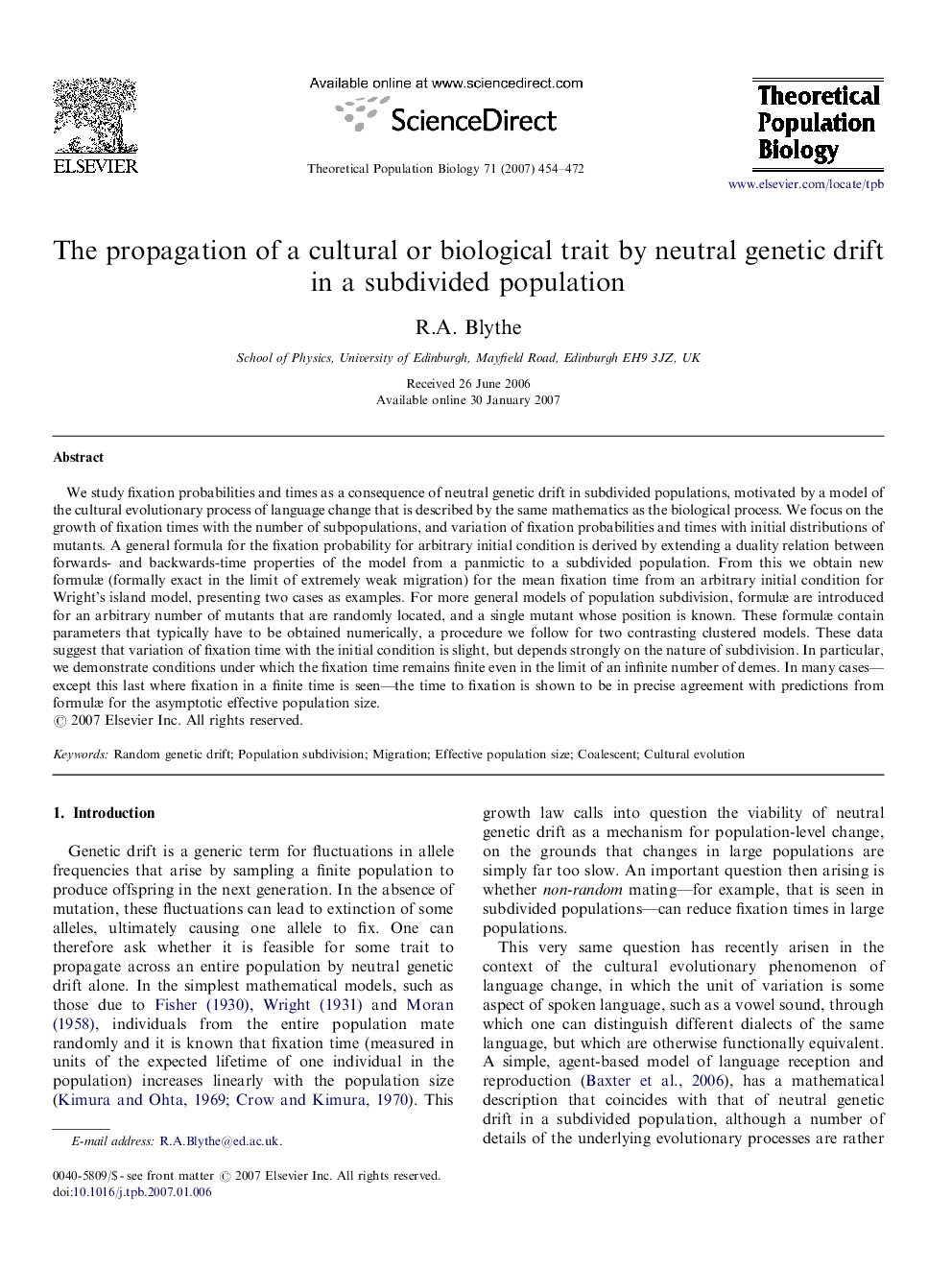| Article ID | Journal | Published Year | Pages | File Type |
|---|---|---|---|---|
| 4502834 | Theoretical Population Biology | 2007 | 19 Pages |
We study fixation probabilities and times as a consequence of neutral genetic drift in subdivided populations, motivated by a model of the cultural evolutionary process of language change that is described by the same mathematics as the biological process. We focus on the growth of fixation times with the number of subpopulations, and variation of fixation probabilities and times with initial distributions of mutants. A general formula for the fixation probability for arbitrary initial condition is derived by extending a duality relation between forwards- and backwards-time properties of the model from a panmictic to a subdivided population. From this we obtain new formulæ (formally exact in the limit of extremely weak migration) for the mean fixation time from an arbitrary initial condition for Wright's island model, presenting two cases as examples. For more general models of population subdivision, formulæ are introduced for an arbitrary number of mutants that are randomly located, and a single mutant whose position is known. These formulæ contain parameters that typically have to be obtained numerically, a procedure we follow for two contrasting clustered models. These data suggest that variation of fixation time with the initial condition is slight, but depends strongly on the nature of subdivision. In particular, we demonstrate conditions under which the fixation time remains finite even in the limit of an infinite number of demes. In many cases—except this last where fixation in a finite time is seen—the time to fixation is shown to be in precise agreement with predictions from formulæ for the asymptotic effective population size.
